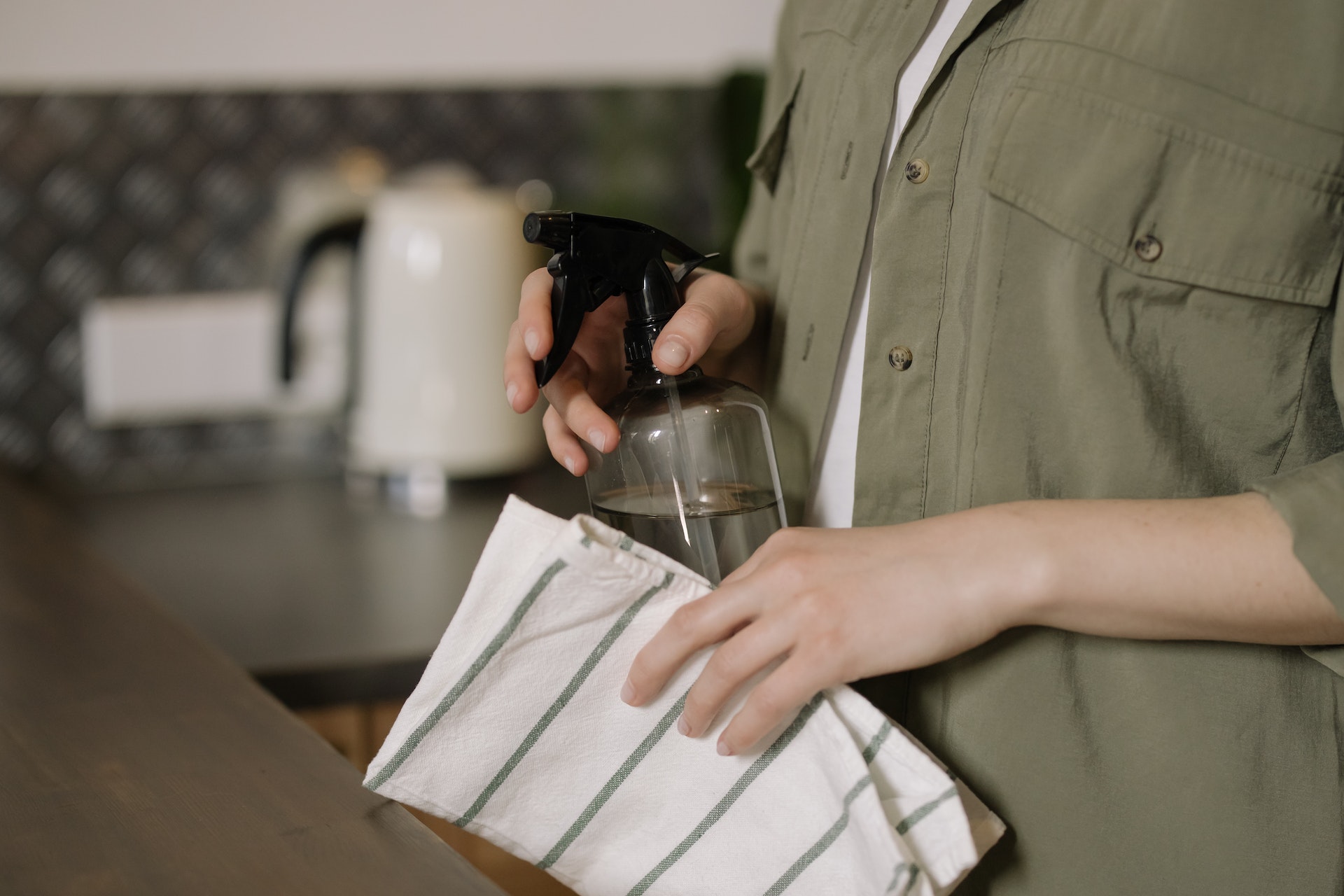This year, I am making an intentional shift to feed my mind, body and soul. This includes making sure my surroundings support my goal. One way I am caring for my home is to select cleaning products for a greener lifestyle. I’m removing toxic/harsh chemicals and replacing them with eco-friendly alternatives. The products I use need to be safe, yet still sanitize the surfaces I use them on. I researched this quite a bit and learned a lot in the process. My newest addition is a DIY Grain Alcohol Sanitizing Spray.
What are the Benefits of a Grain Alcohol Sanitizing Spray?
- Healthy Home: Keep harsh chemicals and toxins away from skin and airways
- Healthy Planet: Reduce pollution in waterways, air, and waste facilities
- Healthy Responsibility: Educated decisions about product ingredients
What are My Ingredient Options For Making a Green Sanitizing Spray?
- Vinegar
- Isopropyl Alcohol (99% pure or 70% rubbing alcohol)
- Ethyl Alcohol or Ethanol (Meant for consumption, i.e.: vodka or grain alcohol)
There are pros associated with each base ingredient:
Vinegar is natural and you can buy organic varieties. White vinegar is an option to avoid any concerns about discoloration.
Isopropyl alcohol is clear and has disinfecting / sanitizing properties.
Vodka and grain alcohol are odorless, colorless and available in different strengths.
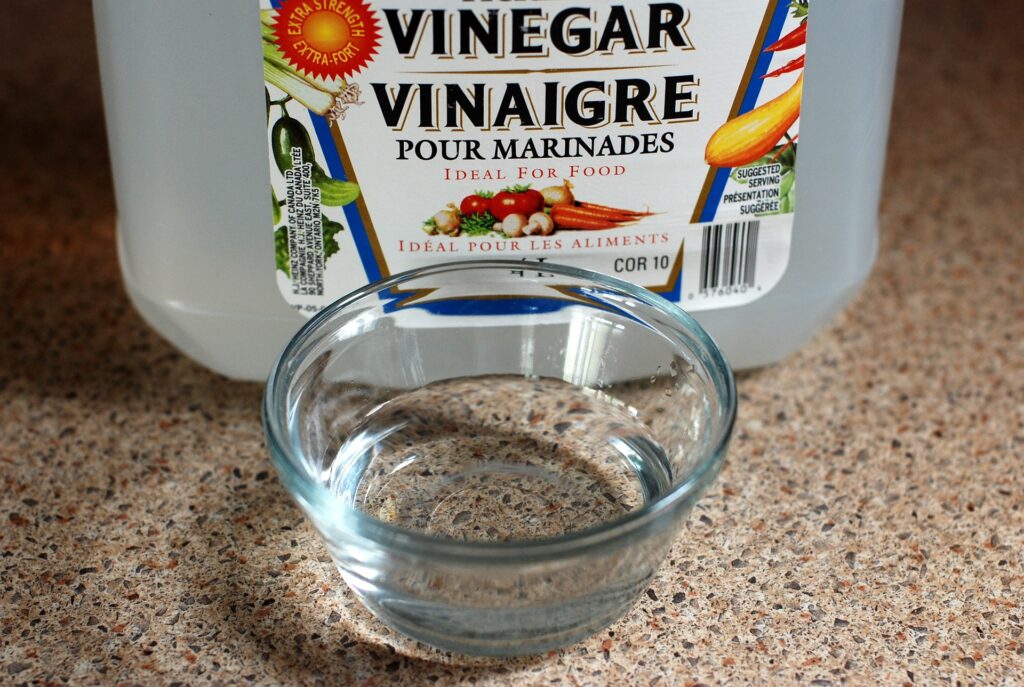
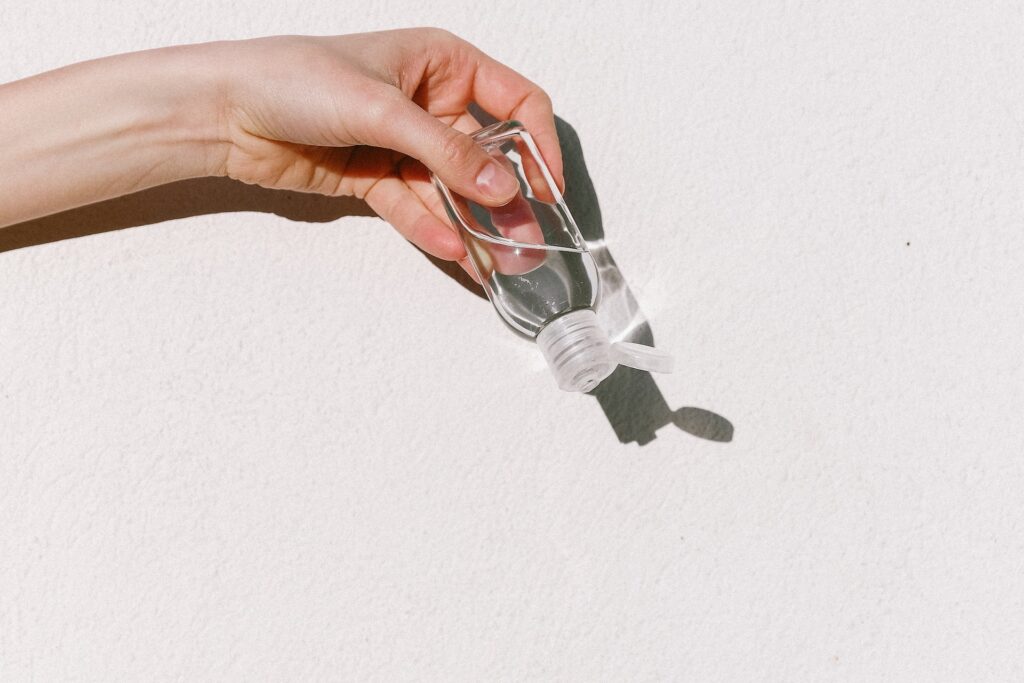

There are also cons for each base:
Vinegar doesn’t have a pleasant scent. Despite its cleaning properties, it’s not a fresh, clean fragrance choice.
Isopropyl alcohol sanitizes, but good ventilation is necessary to avoid inhalation of fumes.
Vodka is odorless and colorless, but pricey depending on the brand. My first inclination was to choose a vodka base. That is, until I began exploring how alcohol proof compares with its ability to sanitize.
What are the Disinfecting Properties of Green Sanitizing Sprays?
When using isopropyl (rubbing alcohol) or ethanol (alcohol for consumption) for sanitizing, there needs to be a certain percentage of that alcohol present to actually kill viruses, bacteria or to disinfect surfaces. That percentage should be at least 60% according to the CDC. Other sources recommend 80% alcohol concentration for sanitizers. Rubbing alcohol from the pharmacy is 70% alcohol. This can be a cost-effective base for sanitizing sprays. As I said earlier, I am not a fan of the odor or the fumes, so I researched ethyl alcohol (vodka).
Here’s where the math comes in. “Proof” of alcohol is actually twice the alcohol (ethanol) content by volume. For example, let’s look at a typical bottle of 80 proof vodka. The ABV, or Alcohol by Volume is actually 40%. This is not enough to kill contaminates. For a spray solution to act as a sanitizer, the vodka base needs to be 120–190 proof to be effective.
A higher percentage, however, doesn’t guarantee better sanitizing. Munglobal.au reports 70% alcohol concentration is most effective at killing pathogens. Higher or lower percentages can be less effective. A lot of this has to do with cell membranes and proteins. If you want to learn more, you can certainly visit several articles on the subject. I have provided the Munglobal.au link above.
Sprays with higher concentrations of alcohol also evaporate quickly. Adding water ensures sprays stay in contact with surfaces long enough to sanitize. If you dilute the alcohol too much though, you will spread germs rather than killing them.
A good rule of thumb is to allow the surface to stay wet for at least 30 seconds.
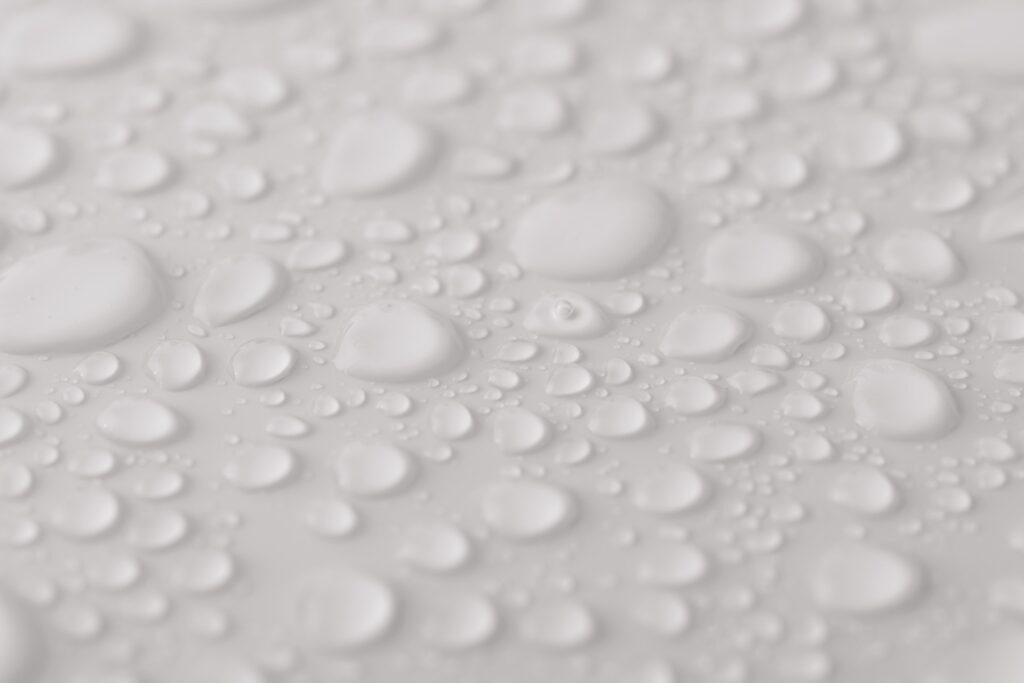
What are the Disinfecting Properties of Grain Alcohol Sanitizing Spray?
This recipe for DIY Grain Alcohol Sanitizing Spray uses 190 proof grain alcohol. A small amount of water is added to the solution. The result is an 80% concentration of alcohol. As discussed above, this is the recommended concentration for safe sanitizing. This mixture won’t expire, but should be kept away from open flames, sparks and heat. As with other cleaning solutions, it should not be ingested and kept away from children’s reach.
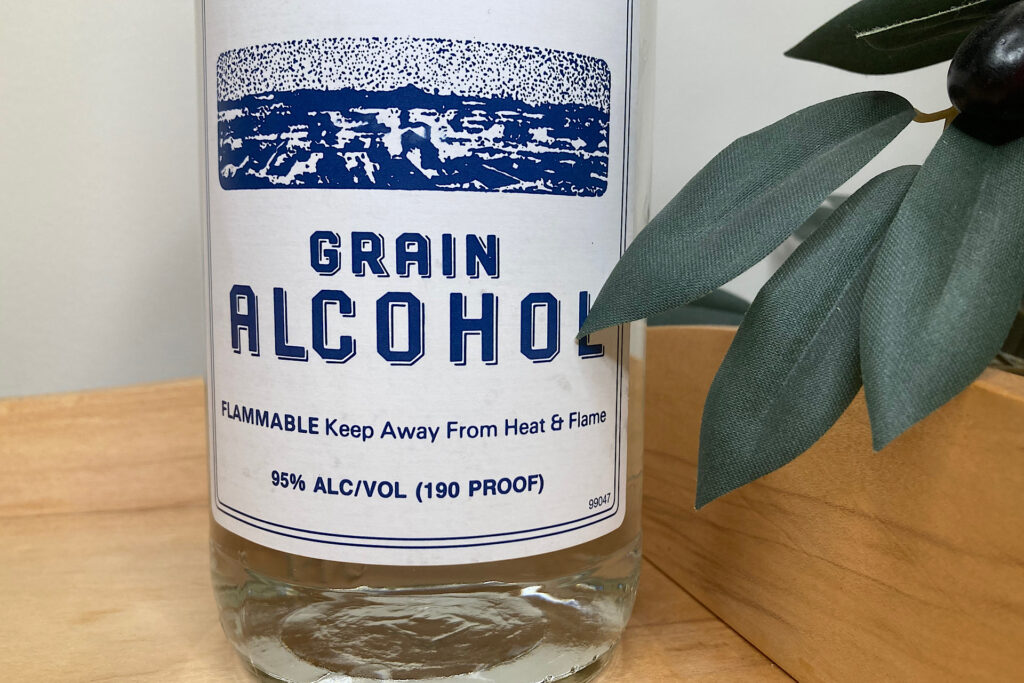
How to Add Scent to Grain Alcohol Sanitizing Spray
(Disclosure: Late Bloomer in Bakerville is a participant in the Amazon Services LLC Associates Program, an affiliate advertising program designed to provide a way for websites to earn advertising revenues by advertising and linking to Amazon.com )
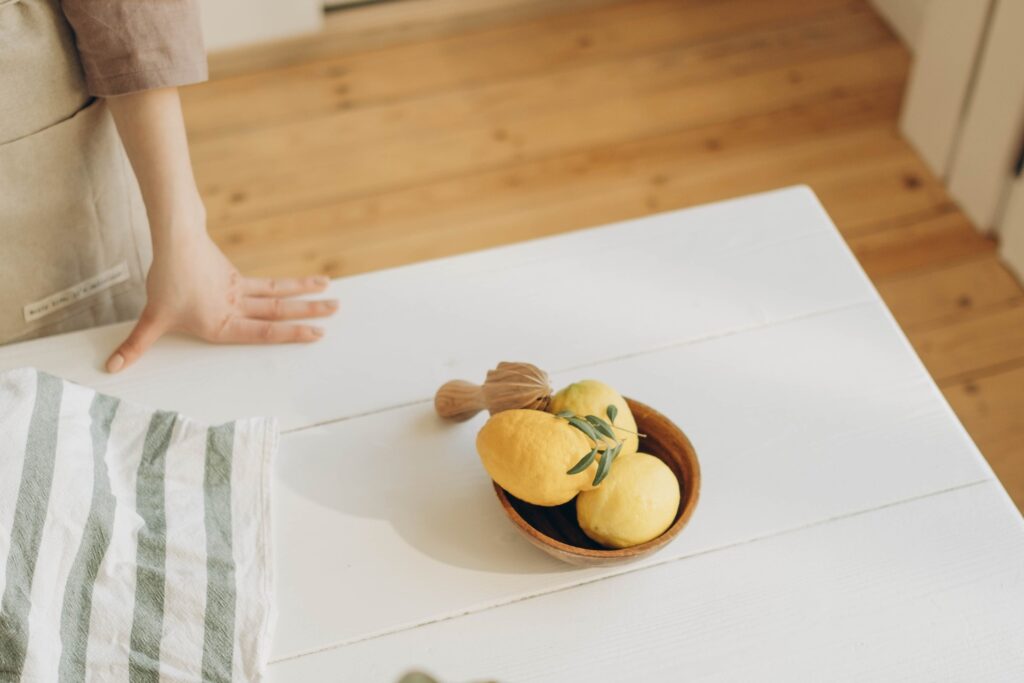
I like to add a fragrance note to my spray bottles. This is not a necessary step. You can skip adding aromatics if you prefer an unscented version.
I chose lemon essential oil for my mix. Pubmed reports lemon essential oil has potential as a natural antimicrobial agent against food-borne pathogen and spoilage bacteria. This was a nice addition to the sanitizing properties of the grain alcohol.
I used Cliganic Lemon Essential Oil for my green, sanitizing spray cleanser. I like its fresh, clean scent. The product is 100% pure essential oil, organic and non-gmo. It is cold-pressed, unrefined and a cruelty-free product.
You might also try adding lemon peel or lemon zest to your solution for that citrusy aroma.
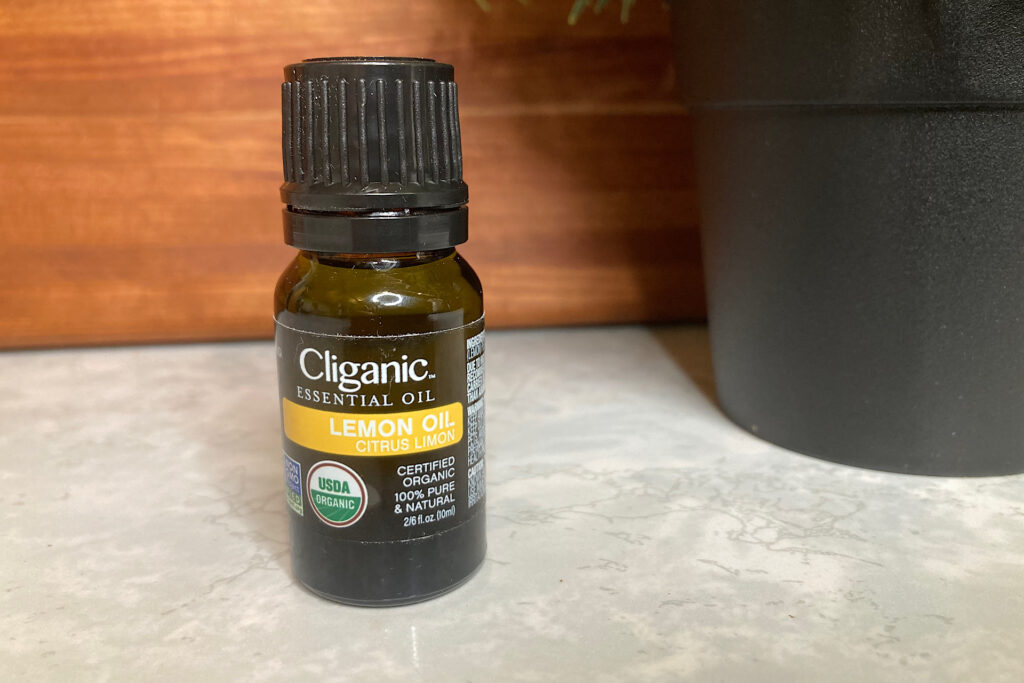
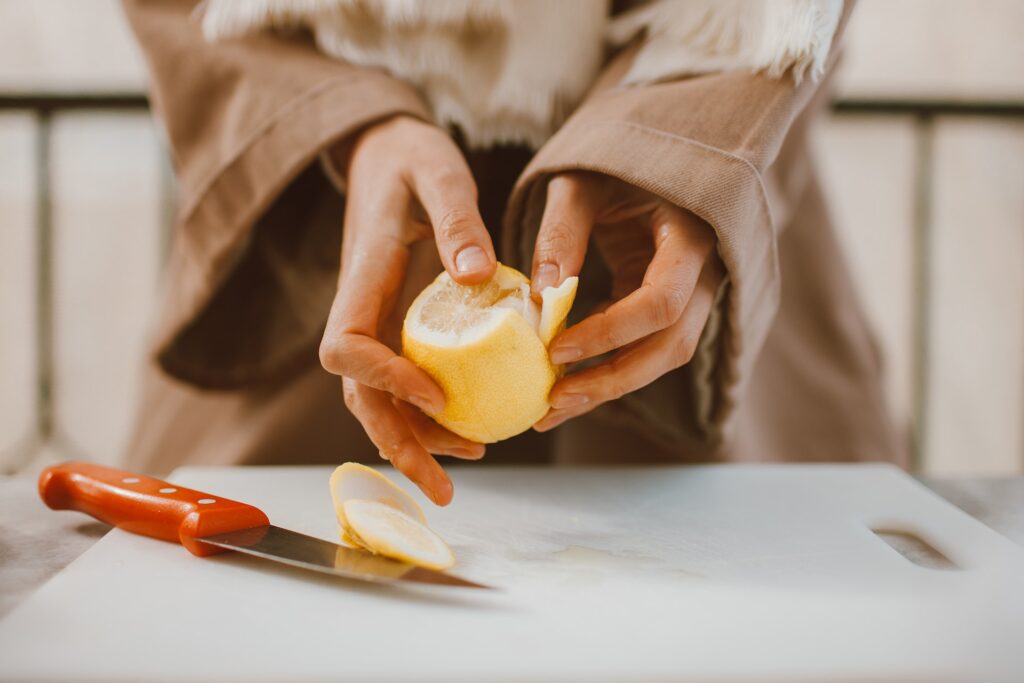
Is DIY Grain Alcohol Sanitizing Spray Expensive?
At publish date, the cost to make a little over 10 ounces of this grain alcohol sanitizing solution was $5.64. It’s pricier than commercial cleansers, but not expensive. I’m content to pay a little more if I can understand and trust the ingredients in a product.
How to Make Grain Alcohol Sanitizing Spray
This DIY Grain Alcohol Sanitizing Spray cleanser is super simple to make. Begin with a clean spray bottle. I prefer a glass bottle with a silicone sleeve. Mix the solution in a measuring cup with a pour spout or use a funnel to pour directly into the spray bottle. Measure out 8 ounces of grain alcohol. Add 3 tablespoons of tap water. You can add distilled water if you’d like. I have well water and feel comfortable using it. Mix the grain alcohol and water together. Add 15 drops of lemon essential oil. Shake the bottle and it is ready for use. A batch and a half of this recipe (12 ounces) fills a 16 ounce spray bottle about 3/4 of the way full. You can see the amount in my photo below.
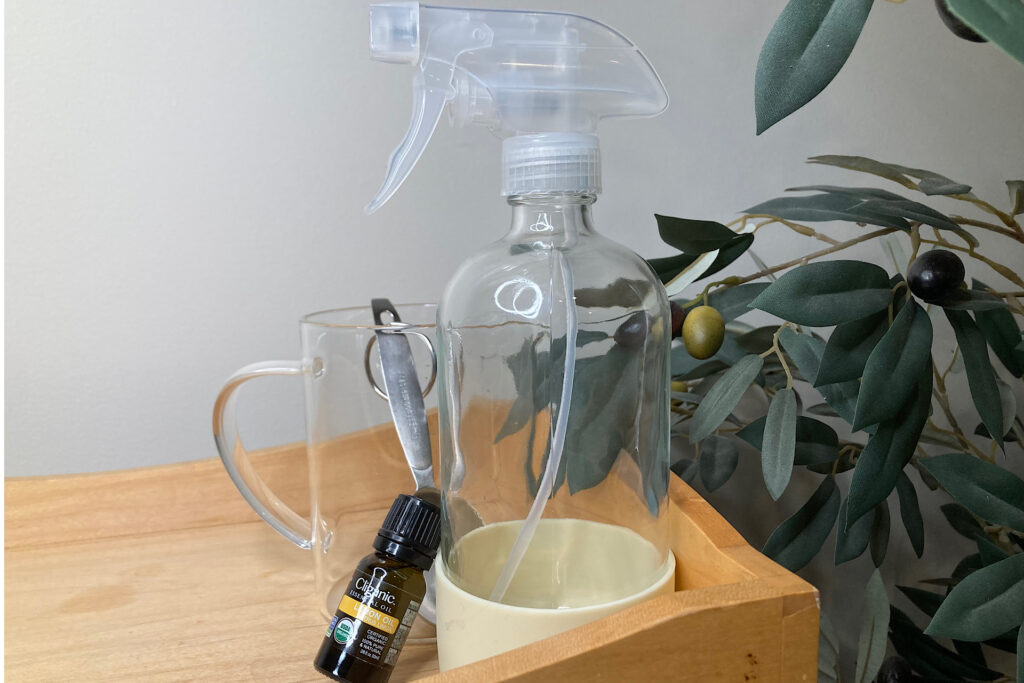
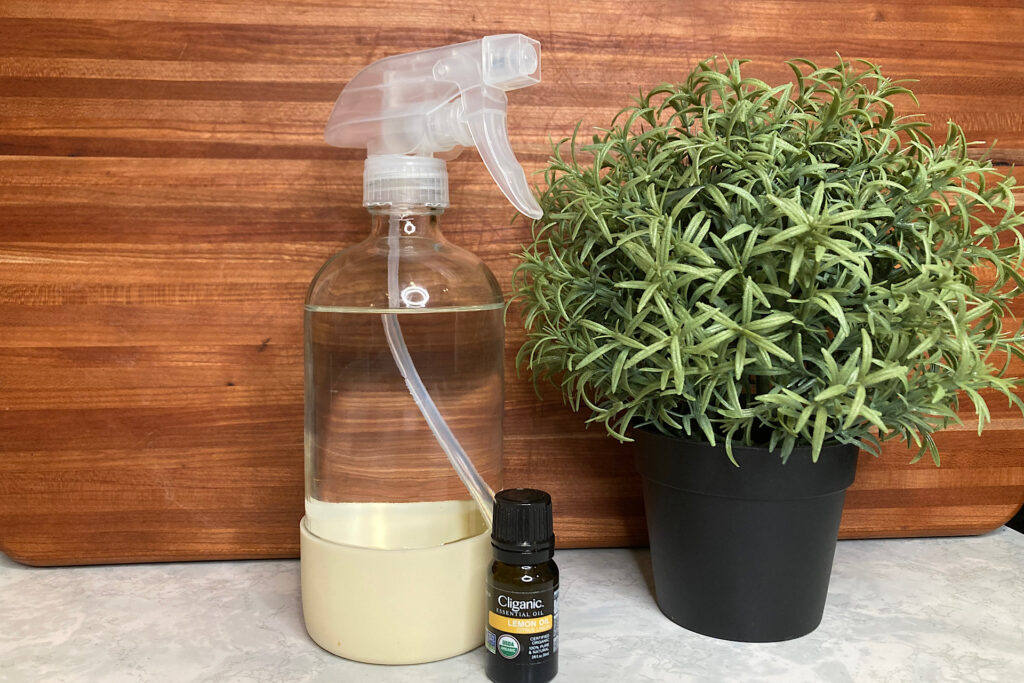
I hope you enjoy this natural spray sanitizer as much as I do. Feel free to drop me a line and share your comments! I’d love to hear your fragrance choices as well.
Other Links:
For more green, eco-friendly projects, see my links for more home fragrance options. The full recipe for the grain alcohol sanitizing spray appears below these links.
Grain Alcohol Sanitizing Spray
Equipment
- 1 16 ounce spray bottle
- 1 Measuring Cup
- 1 Measuring Spoons
- 1 Kitchen Funnel Optional
Materials
- 8 Ounces Grain Alcohol
- 3 Tablespoons Water
- 15 Drops Lemon Essential Oil More or Less Depending on your Preference
Instructions
- Pour 8 ounces of grain alcohol into empty spray bottle using a measuring cup or funnel.
- Add 3 Tablespoons of water to the grain alcohol.
- Shake
- Add 15 drops o lemon essential oil
- Shake
- Store in a cool, dark location. Keep away from heat, flame or sparks. Do not ingest.
